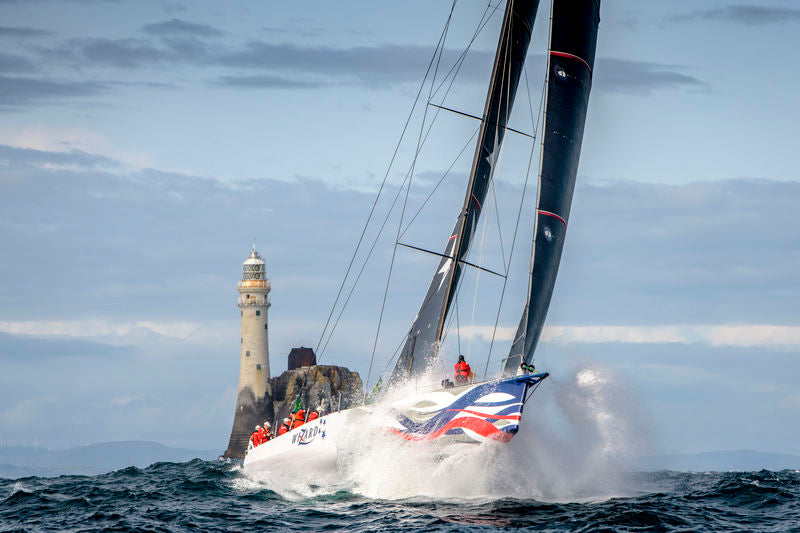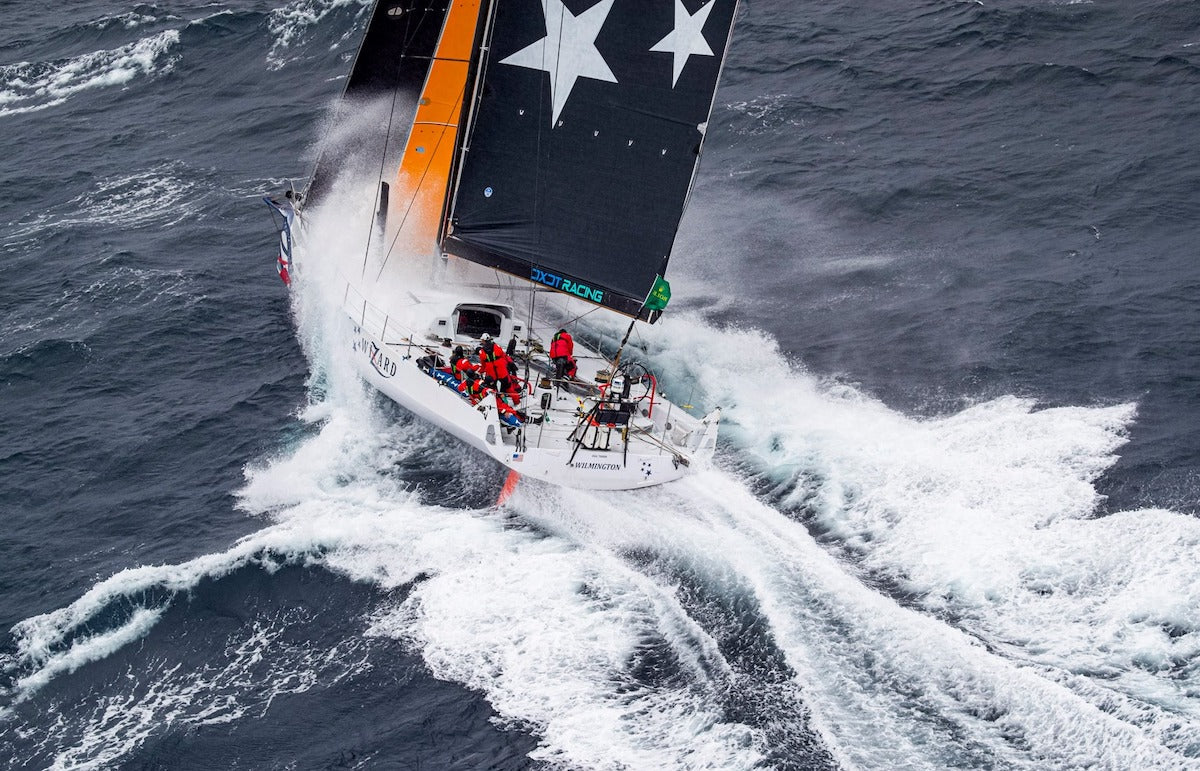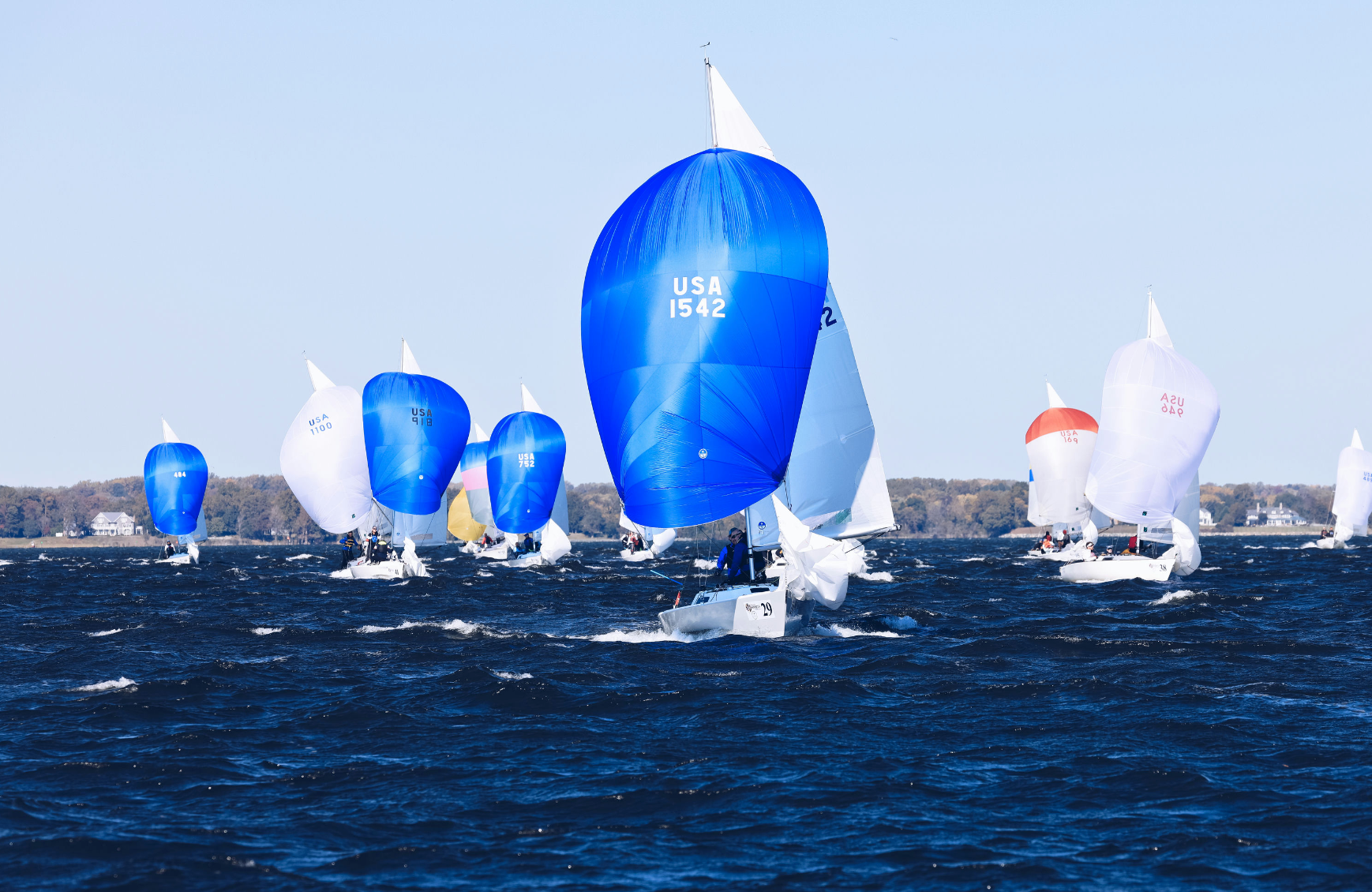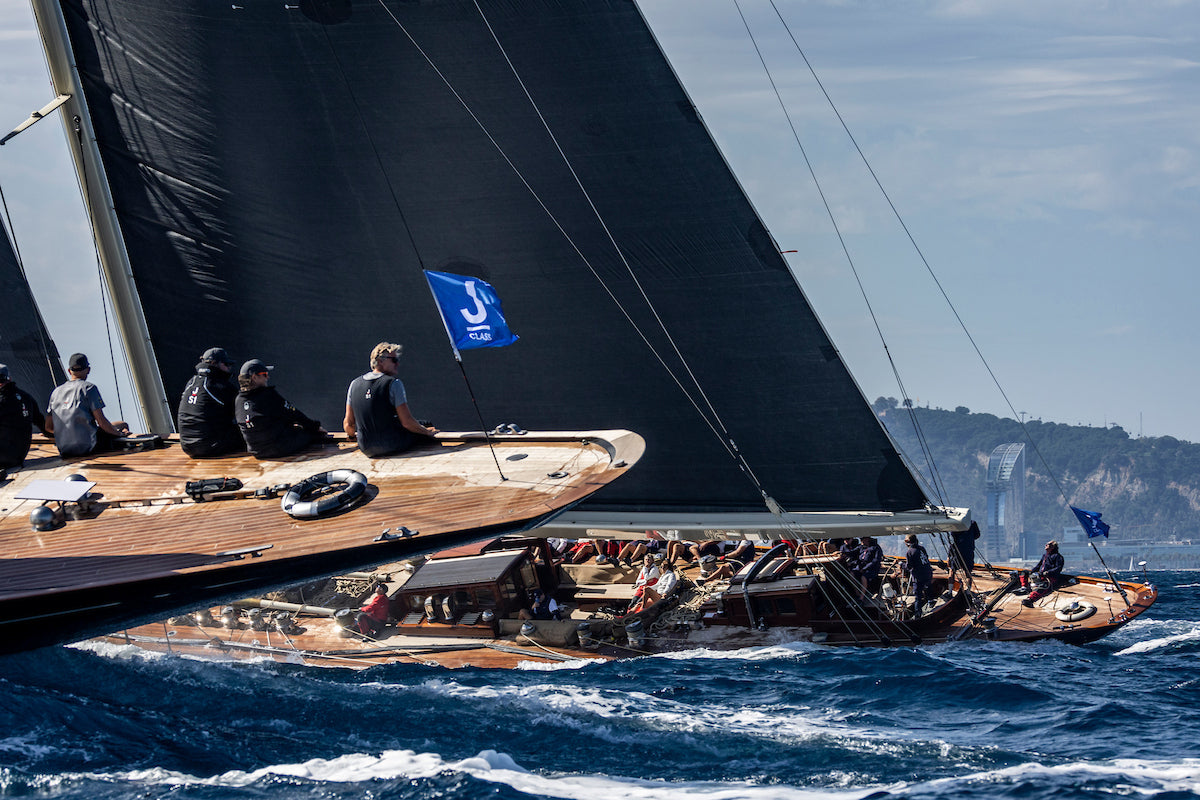WIZARD'S WINNING RECIPE
WIZARD’S WINNING RECIPE
A Methodical Approach to Setup, Schedule, and Sail Choices

Peter and David Askew are on a hot streak with their VO70 Wizard in this year’s Atlantic Ocean Racing Series. They’ve won three of the five events in the series so far; RORC Caribbean 600, 2019 Transatlantic Race, and Rolex Fastnet Race. Their chance to complete the season with a sweep comes on October 19th, when the Rolex Middle Sea Race starts.
Winning ocean races is why the brothers purchased Wizard (the VO70 that won the 2011-12 Volvo Ocean Race 2011-12, as Groupama) in 2017. As Peter puts it, “Our entire program has been deliberately focused on winning.” That program started with a core team that raced a custom-built Reichel/Pugh 74 on the Great Lakes and won the Transpac Barn Door in 2013. Once the brothers set their sights on the Transatlantic Race, though, they knew they needed a canting keeler. Groupama, then sailing as Giacomo, was for sale in Sydney, Australia after winning overall honors in the 2016 Sydney Hobart Race. “Chris Larson from North Sails helped us put a group together to get the boat to the starting line of the 2017 Sydney Hobart Race, where we won our class,” Peter explains. “We then brought the boat back to the USA, did the 2018 Newport Bermuda Race, and won the Gibbs Hill Lighthouse Division.”
Next, boat captain Chris Maxted took apart and overhauled all the major components and systems, while the sailing team returned to the Great Lakes for another successful season on the R/P 74. Once the Volvo Ocean Race 2017-18 concluded, Charlie Enright and Phil Harmer rejoined the team. “It was at that point,” Peter explains, “that we decided to go after the AORS events, starting with the Caribbean 600 in February 2019. David and I knew full well we had a weapon with Wizard, and the right people in place.”
A combination of ocean-ready boat and crew, plus all their planning and preparation, is why they’ve posted such an impressive string of victories, he adds. “You have to go pretty far back in sailing history to find another boat that has been as successful as this particular Volvo 70. Maybe Dorade, but in the last 30 years, I don’t recall a boat being this dominant in the world’s most challenging ocean races. Over its life this won the Volvo Ocean Race as Groupama, the Sydney Hobart Race as Giacomo, and Newport-Bermuda Race, Caribbean 600, Transatlantic and Fastnet with our Wizard team. It’s an amazing run and the next challenge is the Middle Sea Race.”
“Are we pleasantly surprised by the string of victories?” Peter asks. “Of course, but we never set out to be second or third. Our goal of having a competitive program has been very deliberate. David and I are competitive guys, and we always play to win.”

Charlie Enright has worked closely with the Askews to methodically build a program that could handle a heavy schedule of offshore racing. “Most races are won before they even start,” Charlie reminds us. “Wizard’s off-season and pre-race approach are to leave no stone unturned and to be efficient and rational with our decision-making. Chris Maxted does an exceptional job making sure the boat is ready to race.” The experienced crew includes Will Oxley, Rob Greenhalgh, Phil Harmer, and Mitch White; Phil won the VOR on the boat, and Mitch sailed a lot of miles under the Giacomo name.
“We have good sailors on our team,” Charlie continues, “but so do most of the other boats. The important thing is that we work well together. The boat is 75% American and 25% international, which is cool and somewhat rare.” And Team Wizard is only twelve people, while other similarly sized boats might have 20 crew. “A consistent, tight-knit group is key,” Charlie says. “When that gun does go off, we feel confident that we have as good a chance to win as anybody.”
Winning still takes sailing well and some good luck, he admits, “but the results are pretty consistent over the past year, regardless of what conditions we’ve been sailing in.”
The boat had done a lot of miles by the time the Askews bought her, but Charlie says they also used a methodical approach to replacing the inventory, initially a mix of 3Di Endurance and 3Di RAW. “Some programs take delivery, look at the year in which a particular sail was built, and just start replacing things sight unseen.” Instead, the team has been replacing “about one new sail an event,” which allows for learning and conceptual changes. For example, they’re now using a whisker pole reaching with the J0, a concept they took from the VO65s. The sail’s versatility allows the team to leave some other sails behind, Charlie adds. “It can take the place of the G1 in a pinch upwind. It comes at a rating hit because of its luff length, but we only really use it in events where there’s no real VMG.”
Putting together the best sail package isn’t “voodoo,” Charlie laughs. “We just try to think logically about what we’re doing and the best sail package to get there.”

For the 2019 Fastnet, Wizard added a Helix Code Zero to power them through the light spots. “We used it to VMG downwind off of Start Point,” Charlie says, “and then used the same sail to help us upwind in the light spot east of the Scilly Islands.”
Designer Max Tringale worked on Wizard’s Code Zero. “The size target was similar to the boat’s older style cabled sail, with the goal to not reduce the area or change the sheeting location. By combining Helix with Load-Sharing Technology, we were able to design a lighter, flatter sail that works across a wider wind range.”
Over the past year, Max continues, there’s been “a tremendous amount of collaboration within the North Sails Design Team to develop our latest Helix mold shapes, allowing us to build the flattest and most efficient sail possible. The flying shapes produced, along with Load Sharing between a small luff cord and the sail itself, allows the luff of the sail to project away from the boat, instead of sagging aft and leeward like traditional cabled sails.”
Charlie confirms that the Helix sail can be carried through a wider range of conditions. “It’s lighter, and the luff is not constrained by the cable. We’re learning how to optimize adjustments, not only with the sheet and the tweaker but also with the tack line. The self-supporting sail structure for sure reduces tack load for a given flying shape.”
Charlie predicts that Wizard will see even more benefit from the Helix, once they upgrade the 2015 mast that came with the boat. “That said, we have definitely seen a performance bump by adding the Helix sail.”It’s also easier to put in the bag, and lighter to carry around.
“Peter and David like this kind of sailing because every race is different,” Charlie concludes. They’re really good about picking a goal, picking a tool, and surrounding themselves with the right people. That’s why they’ve been able to achieve such good results in the last couple of years. I’m proud of what we have accomplished—we’ve got a good thing going.”
Peter agrees, and he’s optimistic that their hard work will continue to pay off in the Rolex Middle Sea Race. “ We will approach the final AORS event as we have the others, and see where it shakes out.”



























